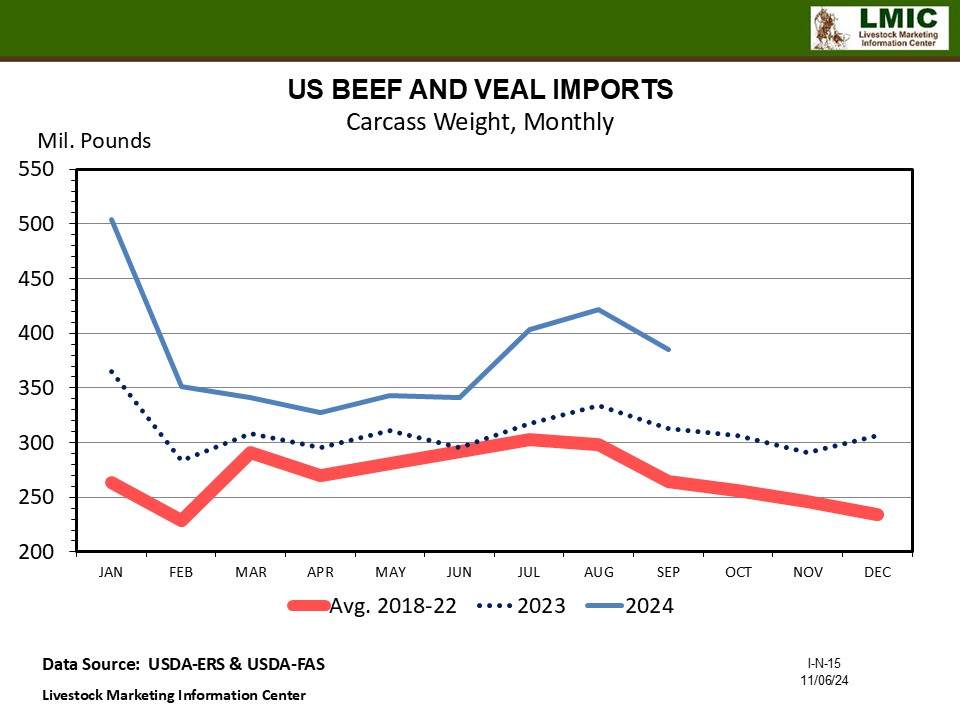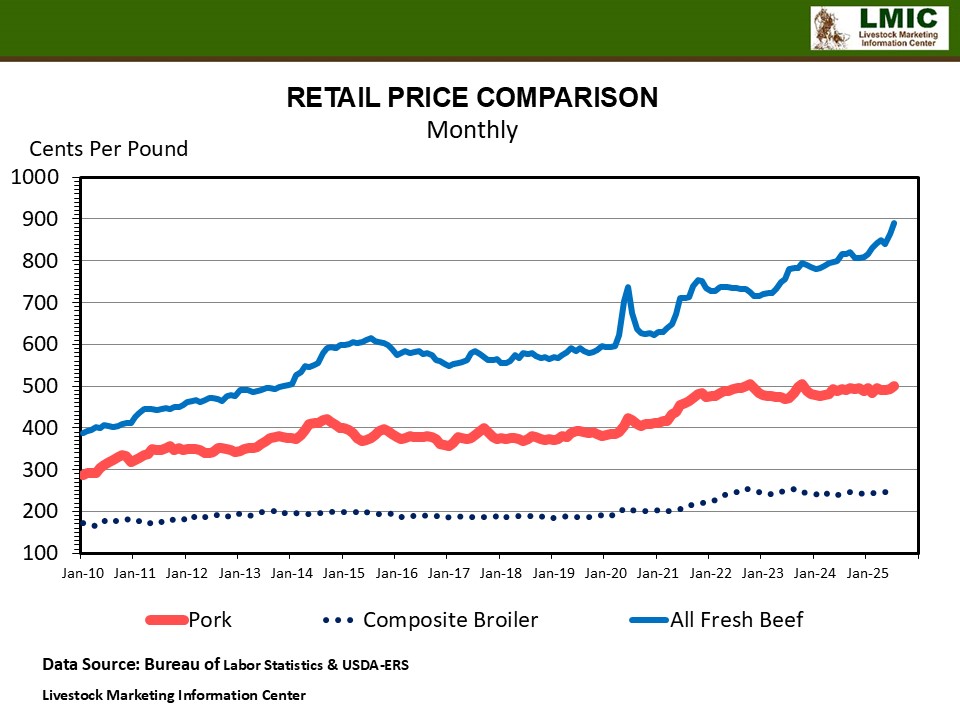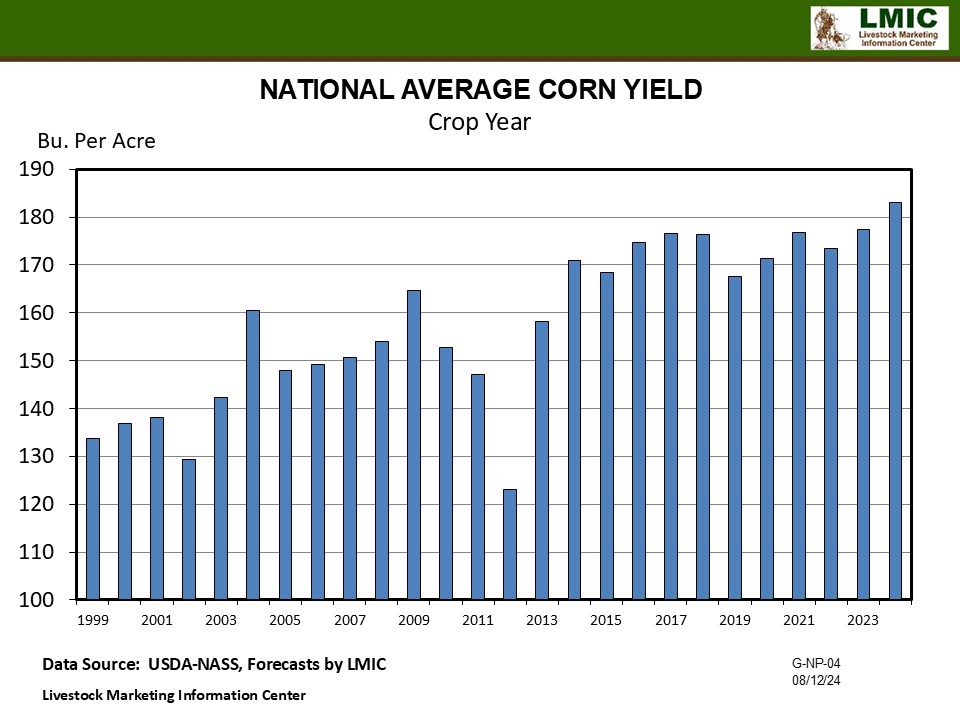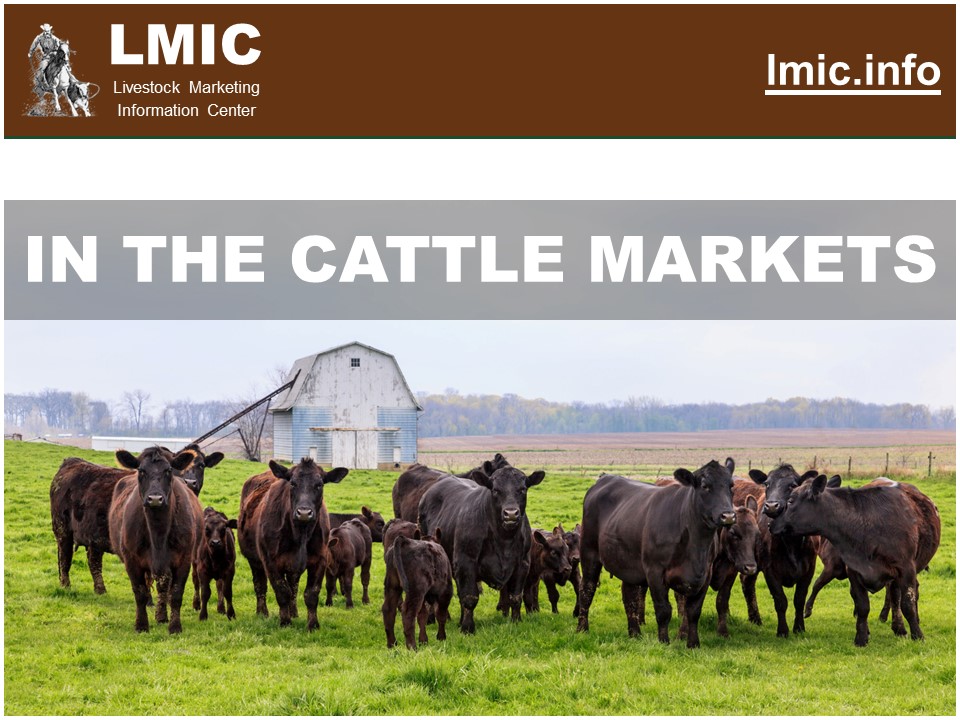Livestock Marketing Information Center
In The Cattle Markets
Updated: 8/25/2025
August Cattle on Feed
The monthly cattle on feed report came out this past Friday. Total cattle on feed, on August 1, was estimated to be 10.92 million head. That puts cattle on feed 2% lower than July 1, 2025, and 2% lower than last year’s August 1 cattle on feed report. From a yearly perspective, August is usually the month that has the lowest amount of cattle on feed. Thus, the lower amount of cattle compared to last month was expected.
Livestock Monitor
Updated: 8/15/2025
MID-YEAR TRADE UPDATE
The USDA-Economic Research Service (ERS) recently released June trade data, allowing for a mid-year update on trade flow dynamics. Beef imports continue to track above year-ago levels with each month this year higher than last year. Through the first six months of the year, beef imports totaled more than 2.9 billion pounds, an increase of +33% (737 million pounds) from last year. Gains in year-to-date beef imports were seen from most markets with Brazil up +107%, followed by Australia (+35%), New Zealand (+8%), and Mexico (+9%), while Canada fell -6%. From January to June, beef exports fell -8% (116 million pounds) to nearly 1.4 million pounds. Beef exports to South Korea increased +9%, but this was more than offset by declines to Japan (-2%), Mexico (-9%), China (-39%), and Canada (-10%).
RETAIL MEAT PRICES
Earlier this week, USDA-ERS released its summary of retail meat prices for July, providing a detailed look at trends across major protein categories. For the month, the all-fresh retail beef price averaged $8.90 per pound, reflecting a +9.2% ($0.75) increase compared to the same time last year. Within the beef complex, year-over-year strength was seen across all cuts, with sirloin steaks up +15.6% to $13.55 per pound, ground beef advancing +12.2% to $6.50 per pound, roasts gaining +9.9% to $8.40 per pound, and rounds moving +7.8% higher to $8.69 per pound.
RECORD LARGE CORN HARVEST RESETS CORN PRICE OUTLOOK
Earlier this week the USDA-National Agriculture Statistics Service (NASS) released its first estimate of the corn and soybean harvests for this year. Corn production is expected to be large as average yields per acre are pegged at a record 188.8 bushels, up from 179.3 bushels last year. Plantings estimates were revised upward from June to 97.3 million acres from 95.2 million acres. This puts production at 16.7 billion bushels, almost two billion more bushels from a year ago. The additional two billion bushels is the biggest since 2018, when the end of the crop year inventory was 2.221 billion bushels. The current crop year (2024-25) carryout inventory is projected to be between 1.3-1.7 billion bushels.
Livestock Monitor (pdf)




